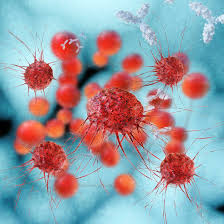Abstract
Tumor mutation burden is an imperfect proxy of tumor foreignness and has therefore failed to consistently demonstrate clinical utility in predicting responses in the context of immunotherapy. We evaluated mutations in regions of the genome that are unlikely to undergo loss in a pan-cancer analysis across 31 tumor types (n = 9,242) and eight immunotherapy-treated cohorts of patients with non-small-cell lung cancer, melanoma, mesothelioma, and head and neck cancer (n = 524). We discovered that mutations in single-copy regions and those present in multiple copies per cell constitute a persistent tumor mutation burden (pTMB) which is linked with therapeutic response to immune checkpoint blockade. Persistent mutations were retained in the context of tumor evolution under selective pressure of immunotherapy and tumors with a high pTMB content were characterized by a more inflamed tumor microenvironment. pTMB imposes an evolutionary bottleneck that cancer cells cannot overcome and may thus drive sustained immunologic tumor control in the context of immunotherapy.
Main
The current working hypothesis for tumor-intrinsic features that determine the magnitude of anti-tumor immune responses relies on the assumption that each mutation contributes equally to a composite measure of tumor foreignness, reflected in the number of sequence alterations per coding DNA sequence or tumor mutation burden (TMB). However, with the exception of mismatch repair-deficient tumors, TMB has failed to consistently demonstrate clinical utility in predicting responses to cancer immunotherapy. Efforts to separate subsets of alterations that may predominantly drive an effective anti-tumor immune response have yet to reveal a universal genomic predictive biomarker1,2. We have previously shown that heterozygous mutations and neoantigens can be selectively eliminated through chromosomal deletions and loss of heterozygosity (LOH) conferring acquired resistance to immune checkpoint blockade (ICB)3. In line with these findings, we have discovered that a higher number of sequence alterations contained in single-copy regions of the genome differentiate responding from nonresponding tumors in the context of immunotherapy4. Together, these findings suggested that mutations and associated neoantigens contained in regions of the genome present in a single copy per cancer cell are less likely to be eliminated by chromosomal loss under the selective pressure of therapy and therefore may mediate sustained neoantigen-driven immune responses and long-term clinical benefit4.
To extend these findings beyond single-copy genomic regions, we hypothesized that tumors with a higher frequency of sequence alterations in either haploid regions or multiple copies would have a fitness disadvantage in the context of immunotherapy, as these alterations would continuously render them visible to the immune system, resulting in sustained immunologic tumor control. Deletions of single-copy alleles through chromosomal loss are typically not tolerated unless they are relatively small homozygous deletions5, as larger chromosomal deletions could contain essential genes in linkage with the mutation and thus be lethal. Similarly, mutation loss by chromosomal deletions3 is evolutionarily unlikely when mutations are contained in multiple copies. Therefore, these ‘persistent’ mutations (which we hereafter refer to as pTMB) may function as an intrinsic driver of tumor rejection in the tumor microenvironment (TME) (Extended Data Fig. 1).
Results
To investigate these hypotheses in a pan-cancer manner, we first evaluated the rate of loss in regions of the genome with a single copy per cell (haploid) versus euploid regions (two copies per cell) using copy number profiles of 5,244 tumors across 31 tumor types from The Cancer Genome Atlas (TCGA) (Supplementary Table 1). These analyses revealed that the rate of loss in haploid regions was consistently lower than that in euploid regions (Fig. 1a), supporting the notion that mutations contained in these regions would be difficult to eliminate. We then examined the frequency of haploid and polyploid regions across the genome and quantified the fraction of the genome in single-copy versus multi-copy states (N = 9,991; Fig. 1b and Supplementary Table 2). Some tumor types, including endometrial carcinosarcomas, bladder cancers, adrenocortical carcinomas, lung squamous carcinomas, lung adenocarcinomas, ovarian cancers and cutaneous melanomas, were enriched for genomic regions in the multi-copy state, while cholangiocarcinomas, pancreatic adenocarcinomas, mesotheliomas and kidney chromophobe tumors showed a higher genome fraction in the single-copy state (Fig. 1b). Integration of sequence alterations in only-copy and multi-copy states revealed a cancer lineage-dependent distribution of persistent mutations (Fig. 1c,d and Supplementary Table 2). Next, we characterized the distribution of persistent mutation load in the background of the overall TMB within each tumor type, and found that TMB does not fully explain the abundance of multi-copy and only-copy mutations, as tumor types with similar TMB exhibited differences in multi-copy and only-copy mutation content (N = 9,242; Fig. 1d and Supplementary Table 2). Notably, a wide range of prevalence of mutations in only-copy or multi-copy states was observed across the range of overall TMB, suggesting that persistent mutations provide a measure of alterations that is distinct from TMB (Extended Data Fig. 2). We further evaluated the degree of correlation between TMB and pTMB and found a substantial degree of variation in their association across the 31 tumor types analyzed (Spearman ρ: median 0.49, range: 0.02–0.89; Fig. 2a and Supplementary Table 3). Similar patterns were observed when multi-copy (Spearman ρ median: 0.42, range: 0.02–0.76) and single-copy mutations (Spearman ρ median: 0.21, range: −0.12 to 0.48) were considered separately. To understand the potential reclassification of tumors based on pTMB, we employed a series of quantile values ranging from 5% to 95% to define high/low groups for TMB and pTMB (Methods). These analyses revealed reclassification rates as high as 53% (range: 15–53%), with a median reclassification rate of 33% across all tumor types (Fig. 2b and Extended Data Fig. 3).







